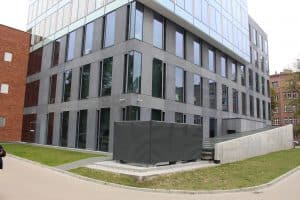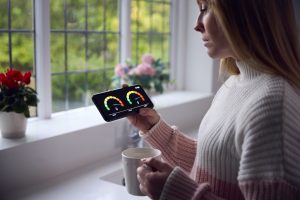In recent years, energy efficiency has become a major concern in the world of architectural design. With the increasing focus on reducing carbon emissions and mitigating the effects of climate change, building designers and owners are looking for ways to create structures that are both energy efficient and environmentally responsible. In this article, we will explore the importance of energy efficiency in building design, and how concrete cladding can contribute to this goal.
The Importance of Energy Efficiency in Building Design
Energy efficiency is the process of reducing the amount of energy used in a building, while still maintaining or improving the level of comfort and functionality. This can be achieved through a combination of design and technology, including the use of energy-efficient building materials, systems, and appliances.
There are many benefits to energy efficiency in building design, including:
- Reduced Energy Costs: Energy-efficient buildings use less energy, which can result in significant cost savings for building owners over the life of the building.
- Improved Comfort: Energy-efficient buildings are typically more comfortable, as they maintain stable temperatures and reduce the need for heating and cooling systems.
- Environmental Responsibility: Energy-efficient buildings have a smaller carbon footprint, reducing the impact of the building on the environment and mitigating the effects of climate change.
- Increased Building Value: Energy-efficient buildings are becoming increasingly popular, and they can have a higher market value than traditional buildings, as they are seen as a smart investment.
How Concrete Cladding Can Contribute to Energy Efficiency
Concrete cladding panels, made by combining concrete with various reinforcing materials, can play an important role in energy efficiency in building design. There are several ways in which concrete cladding can contribute to energy efficiency, including:
- Insulation: Concrete cladding panels can provide good insulation, reducing the amount of heat transmitted through the building envelope and helping to maintain stable temperatures within the structure. This can reduce the need for heating and cooling systems, and result in significant energy savings.
- Air Tightness: Concrete cladding panels can be designed to be airtight, reducing the amount of air infiltration and exfiltration through the building envelope. This can improve the ventilation and energy efficiency of the building, reducing the need for heating and cooling systems.
- Integration with Other Systems: Concrete cladding panels can be integrated with other building systems, such as lighting, HVAC, and electrical systems, to create a seamless and integrated building envelope. This integration can improve the performance of these systems, reducing energy use and contributing to the overall energy efficiency of the building.
- Durability and Longevity: Concrete cladding panels are known for their durability and longevity, reducing the need for frequent maintenance and repair, and reducing the need to replace the panels over time. This durability and longevity also contribute to the energy efficiency of a building, as concrete cladding panels can provide good insulation and air tightness for many years.
Case Study: Energy-Efficient Building Design with Concrete Cladding
One example of a building that demonstrates the benefits of energy-efficient building design with concrete cladding is the Bullitt Center in Seattle, Washington. The Bullitt Center is a six-story, commercial office building that was designed to meet the Living Building Challenge, a set of sustainability standards that aim to create the most environmentally responsible buildings possible.
The Bullitt Center features a number of energy-efficient design elements, including:
- Concrete Cladding: The building features concrete cladding panels that provide good insulation, reducing the amount of heat transmitted through the building envelope and helping to maintain stable temperatures within the structure.
- Air Tightness: The building envelope is designed to be airtight, reducing the amount of air infiltration and exfiltration, and improving the ventilation and energy efficiency of the building.
- Integrated Systems: The building’s systems, such as lighting, HVAC, and electrical systems, are integrated into the concrete cladding panels, creating a seamless and integrated building envelope.
- Passive Solar Design: The building’s design takes advantage of passive solar heating and cooling, reducing the need for heating and cooling systems and contributing to the overall energy efficiency of the building.
The result of these energy-efficient design elements is a building that uses 70% less energy than a typical commercial office building, and produces its own energy through a combination of solar panels and geothermal systems. The Bullitt Center is a great example of the potential for concrete cladding to contribute to energy efficiency in building design.
Conclusion
Energy efficiency is becoming an increasingly important consideration in architectural design, as building owners and designers look for ways to create structures that are both energy efficient and environmentally responsible. Concrete cladding panels can play an important role in energy efficiency in building design, by providing insulation, air tightness, and integration with other building systems, and by being durable and long-lasting. The Bullitt Center in Seattle is just one example of the potential for energy-efficient building design with concrete cladding. With its combination of energy-efficient design elements and concrete cladding, the Bullitt Center demonstrates the potential for buildings to be both environmentally responsible and energy efficient.
In conclusion, concrete cladding panels offer a versatile and cost-effective solution for energy efficiency in building design, and they are likely to play an increasingly important role in the future of architectural design. Whether you are designing a high-rise building or a residential project, concrete cladding panels offer a solution that is both energy efficient and environmentally responsible.





